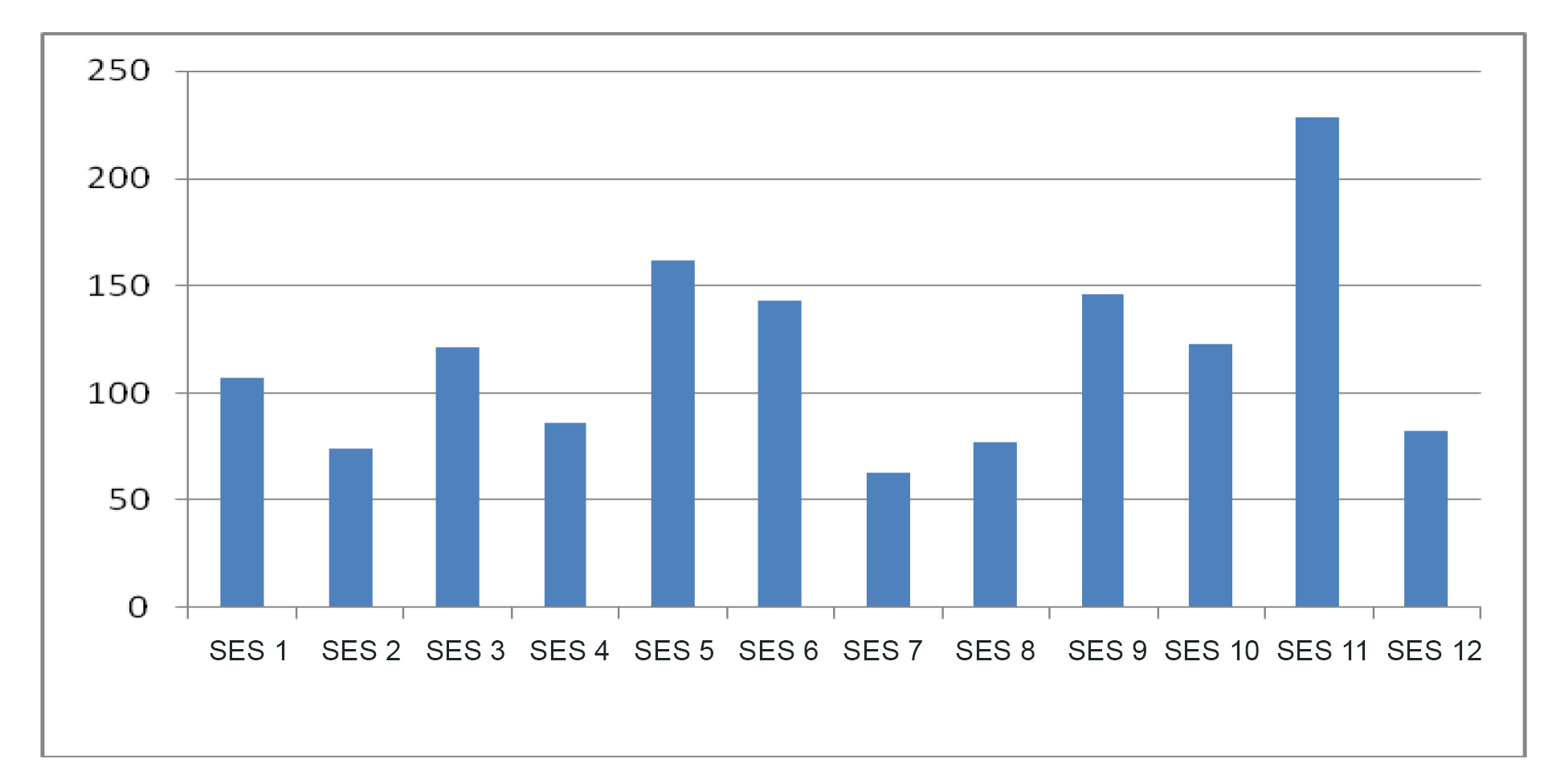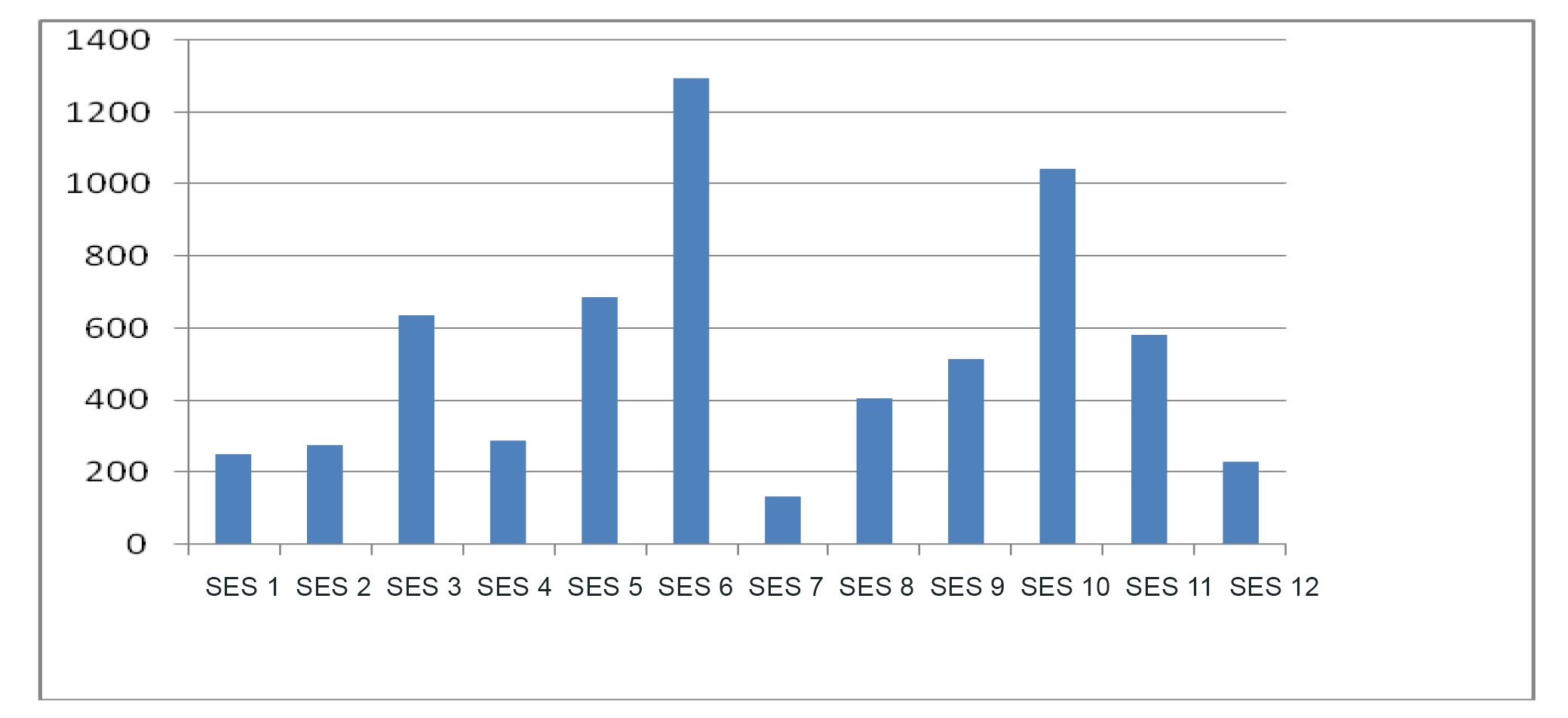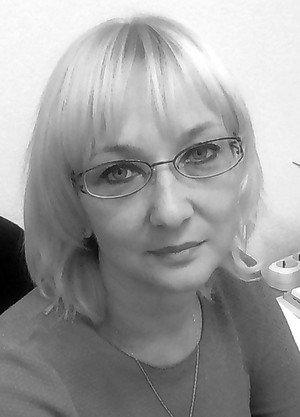Research activity by scholar education schools at P.F. Lesgaft National State University
Фотографии:
ˑ:
Professor, Dr.Hab. N.G. Zakrevskaya
Professor, Dr.Hab. S.S. Filippov
Lesgaft National State University of Physical Education, Sport and Health, St. Petersburg
Keywords: physical education, scholar education schools, research activity, science metrics, publishing activity.
Background. Scholar education schools (SES) based at the sector universities are getting increasingly influential in the national physical culture and sports sector [1, 9, 2, 6]. It was in May 2016 that Russian State University of Physical Culture, Sport, Youth and Tourism (GTSOLIFK) hosted the first Theoretical and Practical Conference “Scholar education schools in the national physical education and sports sector” that underlined the key role played by these research clusters at the present development stage of the national sport science. In this context, we believe it is high time to consider the progress of the research activity by SES.
As was mentioned in the study report [9], it was largely due to the productive research and education activity of Petr Frantsevich Lesgaft, founder of the University, that the scholar education schools were established under Lesgaft National State University of Physical Education, Sport and Health (St. Petersburg). For the past 120 years of the University operations, the generations of academic teachers have carried out an enormous education and research work to help start up and develop the national physical education and sport science. At present, twelve SES are operating under the University.
Objective of the study was to analyze the progress made by the scholar education schools under Lesgaft National State University for the last five years.
Methods and structure of the study. The study was based on a variety of science metrics methods [8] forming a set of the school research activity efficiency rating criteria. The criteria included number of publications, citation indices and the Hirsch indices as provided by the Science Index information and analytical database. As mentioned in the study report [7, p. 128], the growing popularity of the citation indices in the research community may be explained by the practical benefits for contacts of the professional communities and the disciplining effects on the research structuring process supported by the new knowledge generation mechanisms. The citation indices are popular as they provide an important and objective, albeit non-exhaustive guidance to a researcher.
Study results and discussion. It is a common knowledge that the ongoing national education modernization process makes a special emphasis on the initiatives to encourage research projects at universities. It is the matters of due succession that are critical for development of any research community, and the scholar schools emergence, growth and progress in this context may be considered a natural trend in the modern social and scientific development. There are quite a few science efficiency metering criteria that are applied today to rate progress of a scholar school [8]. Special emphasis in these metrics is made on the academic and research human resource of the scholar schools that ensures due succession, keeps up good traditions and advances the research activity [5]. The scholar schools under Lesgaft National State University have showed good progress due to the higher physical education technologies being persistently perfected by teams. Progress of the schools’ academic and research potential may be demonstrated by analysis of the research projects being performed in different areas by the scholar education schools of the University [3]. The schools report their progress on a yearly basis, and it is the individual publishing activity rates of the academic staff that have become one of the key school performance indicators for the last few years. Given hereunder are the progress data for the last five-year period indicative of the schools research activity (see Table 1).
Table 1. Science metrics of the scholar education schools (SES) operating under Lesgaft National State University, for the last five years
|
SES # |
Research fields of the SES |
Citation index |
Publications |
Hirsch index of the RES leader |
Theses, Dr/ PhD |
Masters’ theses |
|
|
Medical SES |
|||||
|
1 |
Functional anatomy of sport activity |
249 |
107 |
4 |
- |
3 |
|
2 |
Biochemical methods for athletes' physical work capacity rating and correction |
274 |
74 |
5 |
1 PhD |
2 |
|
3 |
Adaptation physiology mechanisms and regularities in elite sports |
635 |
121 |
8 |
1 Dr 2 PhD |
2 |
|
|
Liberal SES |
|||||
|
4 |
Modern sport, recreation and health improvement technologies for athleticism |
287 |
86 |
5 |
4 PhD |
7 |
|
5 |
Adaptive physical education theory and practice |
685 |
162 |
11 |
2 Dr 3 PhD |
10 |
|
6 |
Modern development trends in physical education theory |
1294 |
143 |
12 |
1 Dr 1 PhD |
8 |
|
7 |
Human hydro-education |
132 |
63 |
5 |
1 PhD |
12. |
|
8 |
Psychological support for success of competitive sport activity |
404 |
77 |
5 |
2 PhD |
21. |
|
9 |
Biomechanics of strength qualities |
512 |
146 |
9 |
3 PhD |
1. |
|
10 |
Individualized elite boxers’ training process theory and practice |
1042 |
123 |
10 |
2 Dr 1 PhD |
20 |
|
11 |
Wrestlers’ athletic training systems: theoretical and practical grounds and perfection |
582 |
228 |
8 |
2 Dr 6 PhD |
4 |
|
12 |
Didactical process content and updates by coaching educator and athlete in team sports |
229 |
82 |
5 |
1 Dr 4 PhD |
21 |
The above data shows the research and education potential of the SES being on the rise, as verified by the citation indices and the doctoral and PhD theses grouped by research fields, the indices being particularly important for assessment of the situation in the narrow research fields. Special emphasis in the RES efficiency analysis will be given to the scientific tradition succession as verified by the post-graduates’ and masters’ research activity.
The citation indices of the school teams provide the most informative SES progress data (see Figure 1; and please note that the SES numbers are the same as in above Table 1). As seen on Figure 1, the citation indices are higher for the SES engaged in the “Modern development trends in the physical education theory” and “Individualized elite boxers’ training process theory and practice” research. It should be noted, however, that high citation indices have never been set as a top priority goal for the SES.

Figure 1. Citation indices of the scholar education schools under Lesgaft National State University
As we once have mentioned, the data reported in the article will be considered as limited by illustrative purposes only, since operations of every scholar education school are much more versatile and need to be rated on an individual basis with due consideration for the school foundation time, research areas, research infrastructure and many other aspects.
Publishing activity of the SES teams comprises one more important science metering index (see Figure 2). Notwithstanding the relevant controversy of this research activity metering criterion which meaning and efficiency are often questioned, the science metrics on the whole are commonly applied to rate efficiency of the intellectual labour. It may be pertinent to note that the Hirsch and RSC (Russian Science Citation) indices derived from different databases may be largely different for the same researcher as they mostly depend on the scope of the database [6].

Figure 2. Publishing activity of the scholar education schools under Lesgaft National State University
The differences in the reported publishing activity of the subject SES (Figure 2) may be explained, in our opinion, by the following points:
- Variations in headcounts of the researchers in different research education school teams;
- Different publications may be in different demand by the research community and sport practice (e.g. issues of functional morphology versus critical problems of adaptive physical education);
- Variations in numbers of doctoral students and postgraduates as the most active members of the SES teams;
- Contracting success of the SES management in obtaining stage orders or research contracts; etc.
Let us mention one more key aspect of the SES performance. In the ongoing higher education system modernization process, the scholar education schools have to be effective in their activity in the modern electronic information and education environments. The school members have to be highly active in uploading their research materials, teaching aids, textbooks, monographs, theses, research articles and other information to the relevant websites. The SES performance efficiency may be rated by the demand indices of the relevant research products in the web [4].
The above study data and analyses give the basis for some recommendations to secure further progress of the scholar education schools under Lesgaft National State University, as follows:
– Step up the SES publishing activity by the higher contributions from young researchers;
– Expand the scope of the now-narrow research fields with an emphasis on the topics of top priority for the national physical culture;
– Publish more collected monographs, research papers, textbooks and teaching aids;
– Expand the research within the frame of the Thematic Research Work Schedules approved by the Ministry of Sports and University and, as a result, increase the numbers of theses; and
- Step up the publishing activity in the journals listed in the international and national reference databases and citation systems.
Conclusion. The study shows that the science metrics of the publishing activity providing the means to rate the individual contribution of every member of a scholar education school under the University give a fairly informative basis for assessment of the research accomplishments. The science metrics not only presents the situation as it is at the moment but highlights the ways for further progress of the research activity by the schools.
The study was performed under the State Order by the Federal State Higher Education Establishment Supported by Federal State Budgetary Educational Institution of Higher Education P.F. Lesgaft National State University, St. Petersburg, for the research report “Adaptive physical education and sport theory and practice to improve motor activity, education, culture and socialization of people with physical and health impairments”, pursuant to the Ministry of Sports of Russia Order #318 of April 07, 2015.
References
- Gorelov A.A. Nauchnaya rabota v Lesgaft National State University of Physical Education, Sport and Health: stanovlenie, sostoyanie i perspektivy (Scientific work at Lesgaft National State University of Physical Education, Sport and Health: formation, condition and prospects) / A.A. Gorelov, S.M. Ashkinazi // Teoriya i praktika fiz. kultury. – 2006. – # 10. – P. 22-26.
- Evseev S.P. Nauchno-pedagogicheskaya shkola kak vid integratsii obrazovatel'noy i nauchnoy deyatel'nosti v vysshem fizkul'turnom obrazovanii (Scholar education school as form of integration of educational and research activities in higher physical education) / S.P. Evseev, V.A. Taymazov, N.G. Zakrevskaya, S.S. Filippov // Teoriya i praktika fiz. kultury. – 2014. – # 3. – P.11-16.
- Evseev S.P. Nauchno-pedagogicheskie shkoly universiteta kak faktor modernizatsii vysshego fizkul'turnogo obrazovaniya (University scholar education schools as a factor in modernization of higher sport education) / S.P. Evseev, V.A. Taymazov, S.S. Filippov // Vysshee obrazovanie v Rossii. – 2013. – # 7. – P. 15-21.
- Zakrevskaya N.G. Organizatsionno-pravovoe obespechenie razvitiya elektronnoy informatsionno-obrazovatel'noy sredy universiteta (Organizational and legal provision of university electronic information educational environment) / N.G. Zakrevskaya, S.S. Filippov, E.V. Kapustina; Lesgaft National State University of Physical Education, Sport and Health, St. Petersburg // Uch. zapiski un-ta im. P.F. Lesgafta. – 2016. – # 4 (134). – P. 83-89.
- Zakrevskaya N.G. Razvitie nauchno-pedagogicheskogo potentsiala v universitetakh fizicheskoy kul'tury sovremennoy Rossii: monografiya (Development of scientific pedagogical potential of universities of physical culture in modern Russia: Monograph) / N.G. Zakrevskaya; Lesgaft National State University of Physical Education, Sport and Health, St. Petersburg. – St. Petersburg: [s.n.], 2009. – 165 p.
- Nikitushkin V.G. Indeks Hirsha prepodavateley moskovskogo vuza v sravnitel'noy otsenke nauchnoy produktivnosti sportivnykh vuzov Rossii (Hirsch index of Moscow university teachers in comparative assessment of scientific performance of sport universities of Russia) / V.G. Nikitushkin, G.N. Germanov, A.N. Korol'kov // Teoriya i praktika fiz. kultury. – 2015. – # 2. – P. 94-97.
- Pislyakov V.V. Metody tsitirovaniya nauchnogo znaniya po pokazatelyam tsitirovaniya (Scientific knowledge citation methods based on citation indices) / V.V. Pislyakov: Sotsiologicheskiy zhurnal. – 2007. – # 1. – P. 128-140.
- Khaytun, S.D. Naukometriya: sostoyanie i perspektivy (Scientometrics: state and prospects) / S.D. Khaytun. – Moscow. Nauka, 1983. – 343 p.
- Shamardin A.I. Nauchnye shkoly Volgogradskoy gosudarstvennoy akademii fizicheskoy kul'tury: proshloe i nastoyashchee (Scholar schools of Volgograd State Academy of Physical Culture: Past and Present) / A.I. Shamardin, Y.N. Moskvichev // Teoriya i praktika fiz. kultury. – 2010. – № 8. – P.3-8.
Corresponding author: zakrevskaya_n@mail.ru
Abstract
The article analyzes the research accomplishments of the scholar education schools at P.F. Lesgaft National State University based on the relevant science metrics including a set of the school research activity efficiency rating criteria. The criteria include numbers of publications, citation indices and the Hirsch indices as provided by the Science Index information and analytical database. The growing popularity of the citation indices in the research community may be explained by the practical benefits for communication in the professional communities and the disciplining effects on the research structuring process with new knowledge generation mechanisms. The citation indices provide an important and objective, albeit non-exhaustive guidance to a researcher. The study shows that the science metrics of the publishing activity providing the means to rate the individual contribution of every member of a research education school under the University gives a fairly informative basis for assessment of the research accomplishments. The science metrics not only present the situation as it is at the moment but highlight the ways for further progress of the research activity by the schools.



